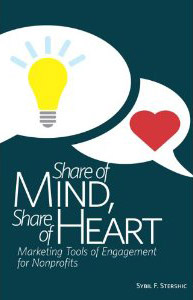 I’m excited about the opportunity to speak at this year’s annual BlogPaws Conference, the largest pet-blogging and social media conference, on “Strengthening Your Brand: Relationship Marketing for Rescues & Shelters.” (More on this session topic later.)
I’m excited about the opportunity to speak at this year’s annual BlogPaws Conference, the largest pet-blogging and social media conference, on “Strengthening Your Brand: Relationship Marketing for Rescues & Shelters.” (More on this session topic later.)
Since this is a new nonprofit audience for me, I’ve spent the past several weeks learning about animal rescue and shelter organizations, including visiting their facilities. It’s been a fascinating experience listening to heart-warming stories of pet rescue and adoptions; sadly, there were also disturbing stories of animal abuse and neglect. Here’s what I discovered:
- Many shelters are mostly volunteer run, with few or no paid staff. The people involved are exceptionally compassionate and passionate about their work with animals. (While it’s easy to be captivated by a healthy kitten or puppy, the volunteers are just as committed to helping animals with medical and psychological issues.)
- Running a shelter or rescue operation is a 24/7, 365 day commitment. There is no time off.
- Volunteers & staff wear multiple hats as: administrators … animal behaviorists … matchmakers (matching pets with people) … social workers … pet therapists … fundraisers … cleaners … vet techs & assistants (as allowed by law & training) … advocates and educators for animal spay/neutering, to name a few.
 While rescues & shelters have challenges that are unique to their respective missions and operations, they also share a common marketing challenge – competition. There are many animal shelters within the same geographic region that compete for volunteers, prospective adopters, veterinary support, donors and sponsors. These organizations also compete with every other nonprofit in their communities for volunteers, funding, and consumer attention.
While rescues & shelters have challenges that are unique to their respective missions and operations, they also share a common marketing challenge – competition. There are many animal shelters within the same geographic region that compete for volunteers, prospective adopters, veterinary support, donors and sponsors. These organizations also compete with every other nonprofit in their communities for volunteers, funding, and consumer attention.
That’s why I was asked to speak about relationship marketing at BlogPaws, along with Kristin Elliott. I’ll provide critical insight on nonprofit branding and marketing engagement, and Kristin will share her experience as a pet-product entrepreneur who has helped animal shelter & rescue organizations.
I look forward to co-presenting with Kristin and being part of the BlogPaws Community.




